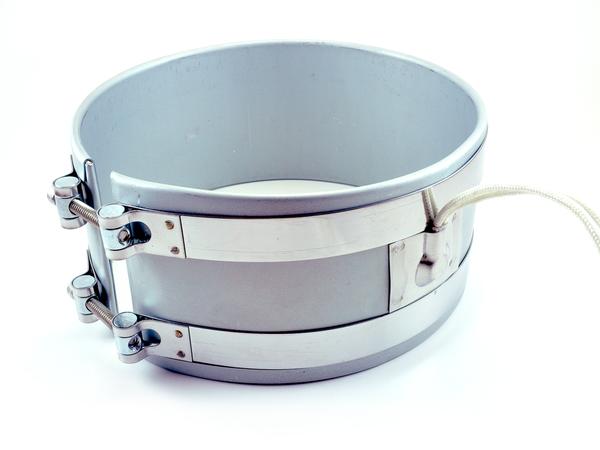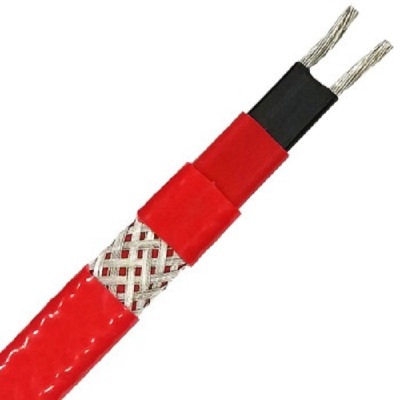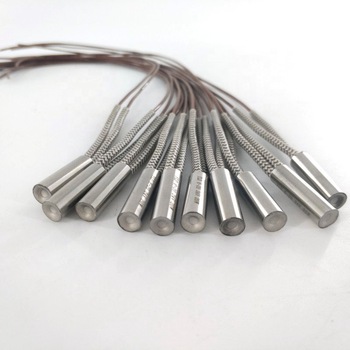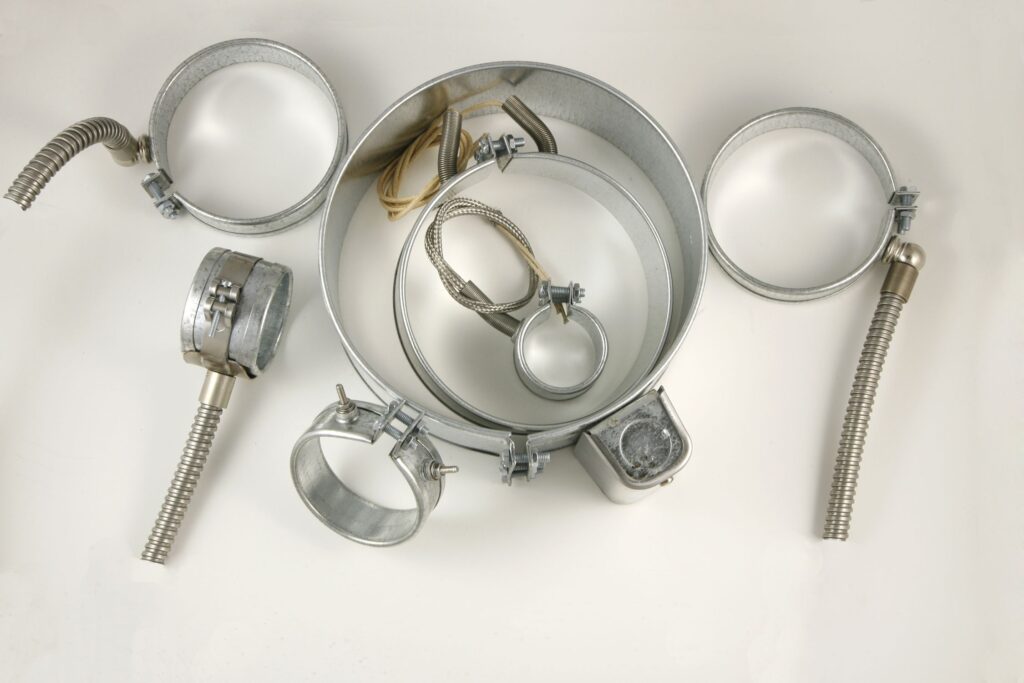3 Reasons Why a Mica Band Heater Boosts Efficiency in Your Projects

Imagine needing to heat a pipe for a specific task. You could use a bulky heating element that wastes energy and heats the surrounding air. But what if there was a better way? Enter the mica band heater: a thin, flexible heating solution that delivers targeted heat precisely where you need it, boosting efficiency in various applications. This blog post explores 3 key reasons why a mica band heater can significantly improve the efficiency of your heating projects: Excellent Heat Transfer for Focused Heating: Efficient Conductor: Mica band heaters use mica, a naturally occurring mineral with exceptional thermal conductivity. This means the heat generated by the internal resistance wire travels quickly and efficiently to the outer surface of the heater. Targeted Heating: Unlike bulky heating elements that radiate heat in all directions, mica band heaters conform to the shape of the object being heated. This minimizes wasted heat loss and ensures the desired temperature is reached quickly and precisely. Here’s a table summarizing the benefits of an excellent heat transfer in mica band heater: Superior Insulation for Minimized Heat Loss: Mica’s Insulating Properties: The mica layer in a mica band heater acts as a natural insulator. This traps heat within the element, preventing it from escaping to the surrounding environment. Reduced Ambient Heating: By minimizing heat loss, mica band heaters reduce the overall temperature in your workspace. This creates a more comfortable working environment and can even help lower your air conditioning costs. Here’s a table summarizing the benefits of a superior insulation in mica band heater: Durable Design for Long-Lasting Performance: Mica’s Strength and Stability: Mica is a naturally robust material that can withstand high temperatures and harsh environments. This translates to a longer lifespan for your mica band heater, reducing the need for frequent replacements. Flexible Construction: The mica band heater’s flexible design allows it to conform to various shapes and sizes. This versatility makes it suitable for a wider range of applications compared to rigid heating elements. Choosing the Right Mica Band Heater for Your Needs: With so many benefits, it’s easy to see why mica band heaters are a popular choice for various industrial and commercial heating applications. When selecting a mica band heater, consider these factors: Wattage: Choose a heater with enough wattage to reach and maintain the desired temperature for your specific application. Size: Ensure the heater size fits the circumference of the object you’re heating. Voltage: Select a heater compatible with your electrical system’s voltage. Terminations: Choose the appropriate terminal type (screw terminals, lead wires, etc.) for easy installation. Wrap Up Mica band heaters offer a powerful combination of targeted heating, excellent insulation, and a durable design. These key features translate to significant efficiency gains in various applications. If you’re looking for a precise and energy-saving heating solution, consider incorporating mica band heaters into your next project!
5 Ways Self-Regulating Heating Cables Can Improve Process Control

Keeping your pipes from freezing in winter is just the tip of the iceberg! A self-regulating heating cable offers a hidden superpower in process control. These innovative cables automatically adjust their heat output based on the surrounding temperature, ensuring consistent and efficient heating for various industrial applications. This guide explores 5 ways a quality self-regulating heating cable can significantly improve industrial process control: Precise Temperature Maintenance: Maintaining a specific temperature is crucial for many industrial processes. Traditional heating methods often struggle with maintaining consistent heat, leading to fluctuations that can impact product quality. Self-regulating heating cables solve this problem: Automatic Temperature Regulation: The cable automatically adjusts its heat output based on the surrounding temperature. As the temperature rises, the cable reduces heat output, and vice versa. This ensures a consistent and precise heating environment, crucial for processes like: Chemical reactions: Maintaining a specific temperature is essential for many chemical reactions to occur correctly. Self-regulating cables ensure consistent heat, leading to predictable and reliable outcomes. Food and beverage production: Certain food and beverage products require specific temperatures during processing. Self-regulating cables help maintain these temperatures, ensuring product quality and safety. Adhesive curing: Many adhesives require a specific temperature range to cure properly. Self-regulating cables provide the consistent heat needed for optimal adhesive curing. Energy Efficiency: Traditional heating methods often waste energy by constantly pumping out heat, even when it’s not needed. Self-regulating cables offer a more efficient solution: Heat Only When Needed: The cable only generates heat when the surrounding temperature falls below the desired level. This eliminates unnecessary energy consumption and reduces your overall operating costs. Easy Installation and Maintenance: Traditional heating systems can be complex to install and maintain. Self-regulating heating cables offer a simpler solution: Flexible and Easy to Install: The cables are self-contained and easy to install on pipes, tanks, or vessels. They can be cut to length on-site, minimizing waste and simplifying installation. Low Maintenance: Self-regulating cables require minimal maintenance. They have no thermostats or other controls to worry about, reducing ongoing maintenance costs. Freeze Protection for Critical Applications: Protecting pipes and equipment from freezing is essential in cold environments. Self-regulating heating cables offer reliable freeze protection: Automatic Freeze Protection: The cable automatically increases heat output as the temperature drops, preventing pipes and equipment from freezing and potential damage. This is crucial for applications like: Water and wastewater treatment plants: Frozen pipes can disrupt critical operations in these facilities. Self-regulating cables ensure uninterrupted operation during cold weather. Fire sprinkler systems: Frozen sprinkler pipes can render a fire protection system useless. Self-regulating cables ensure these systems are always operational, even in freezing temperatures. Enhanced Safety: Traditional heating methods can pose safety risks, such as overheating or electrical hazards. Self-regulating heating cables offer a safer alternative: Self-Limiting Design: The cable automatically limits its heat output, preventing overheating and potential fire hazards. This makes them ideal for use in sensitive environments with flammable materials. Final Words Self-regulating heating cables are a versatile tool for improving process control in various industrial applications. They offer precise temperature maintenance, energy efficiency, easy installation, reliable freeze protection, and enhanced safety.By considering the benefits and choosing the right cable for your specific needs, you can improve your process control, ensure product quality, and save energy in your industrial setting.
Top 5 Innovations in Cartridge Heater Manufacturing

Every cartridge heater manufacturer is in a race to constantly push the boundaries of design and technology. These small but mighty heating elements play a vital role in various industries, from manufacturing and packaging to food processing and 3D printing. As technology advances, so too do the capabilities of cartridge heaters. Here, we explore 5 exciting innovations that are shaping the future of cartridge heater manufacturing: High-Density Cartridge Heaters: Traditional cartridge heaters use coiled resistance wire to generate heat. However, these coils can limit the power output due to space constraints. High-density cartridge heaters address this issue by using compacted insulating materials and specialized winding techniques. This allows for more heating wire to be packed into a smaller cartridge, resulting in: Increased Wattage: High-density heaters can deliver significantly more power compared to traditional models, making them ideal for applications requiring high heat output. Faster Heating Times: With more power comes faster heating times, which translates to improved efficiency and productivity in various industrial processes. Compact Design: Despite their increased power, high-density heaters maintain a compact size, allowing for easy integration into existing equipment designs. Advanced Material Science: Cartridge heater manufacturers are constantly exploring new and improved materials for both heating elements and insulation. These advancements offer several benefits: Higher Operating Temperatures: New materials like advanced alloys and ceramic oxides can withstand much higher temperatures than traditional materials. This opens doors for applications in demanding environments like metalworking and glass manufacturing. Improved Durability: Advanced materials are often more resistant to corrosion, oxidation, and thermal shock. This translates to longer heater lifespan and reduced maintenance costs. Enhanced Efficiency: New insulating materials can minimize heat loss, leading to more efficient operation and lower energy consumption. Integrated Sensors and Controls: Cartridge heater manufacturers are incorporating sophisticated sensors and control systems into their products. These intelligent heaters offer several advantages: Precise Temperature Control: Integrated sensors provide real-time feedback on temperature, allowing for precise control and maintaining consistent heating throughout the process. Improved Safety: Built-in safety features like over-temperature shutoff can prevent overheating and potential equipment damage. Data Logging and Analysis: Some advanced heaters can record temperature data, allowing for process optimization and predictive maintenance. Additive Manufacturing (3D Printing) for Cartridge Heaters: The rise of 3D printing technology is impacting various industries, including cartridge heater manufacturing. This innovative approach offers several unique benefits: Complex Geometries: 3D printing allows for the creation of intricate heater shapes and designs that are difficult or impossible to achieve with traditional manufacturing methods. Customization: Heaters can be tailored to specific application needs, providing a perfect fit for unique equipment designs. Reduced Lead Times: 3D printing can significantly shorten production times compared to traditional methods, leading to faster delivery for customers. Internet of Things (IoT) Integration: The Internet of Things (IoT) connects devices and machines to a network, allowing for remote monitoring and control. This trend is also impacting the cartridge heater industry: Remote Monitoring: Heater performance and temperature data can be accessed remotely, enabling real-time monitoring and troubleshooting from anywhere. Predictive Maintenance: By analyzing data, potential issues can be identified before they occur, allowing for proactive maintenance and preventing downtime. Improved Efficiency: IoT-enabled heaters can be integrated into automated control systems, optimizing energy consumption and overall process efficiency. Last Word These innovations are just the beginning. As technology continues to evolve, we can expect to see even more exciting developments in cartridge heater manufacturing. Cartridge heater manufacturers are constantly striving to create even more powerful, efficient, and intelligent heaters that can meet the ever-growing demands of various industries. With a focus on advanced materials, innovative designs, and smart features, the future of cartridge heaters looks bright!
3 Reasons Why a Mica Band Heater Boosts Efficiency in Your Projects

Imagine needing to heat a pipe for a specific task. You could use a bulky heating element that wastes energy and heats the surrounding air. But what if there was a better way? Enter the mica band heater: a thin, flexible heating solution that delivers targeted heat precisely where you need it, boosting efficiency in various applications. This blog post explores 3 key reasons why a mica band heater can significantly improve the efficiency of your heating projects: Excellent Heat Transfer for Focused Heating: Efficient Conductor: Mica band heaters use mica, a naturally occurring mineral with exceptional thermal conductivity. This means the heat generated by the internal resistance wire travels quickly and efficiently to the outer surface of the heater. Targeted Heating: Unlike bulky heating elements that radiate heat in all directions, mica band heaters conform to the shape of the object being heated. This minimizes wasted heat loss and ensures the desired temperature is reached quickly and precisely. Here’s a table summarizing the benefits of an excellent heat transfer in mica band heater: Superior Insulation for Minimized Heat Loss: Mica’s Insulating Properties: The mica layer in a mica band heater acts as a natural insulator. This traps heat within the element, preventing it from escaping to the surrounding environment. Reduced Ambient Heating: By minimizing heat loss, mica band heaters reduce the overall temperature in your workspace. This creates a more comfortable working environment and can even help lower your air conditioning costs. Here’s a table summarizing the benefits of a superior insulation in mica band heater: Durable Design for Long-Lasting Performance: Mica’s Strength and Stability: Mica is a naturally robust material that can withstand high temperatures and harsh environments. This translates to a longer lifespan for your mica band heater, reducing the need for frequent replacements. Flexible Construction: The mica band heater’s flexible design allows it to conform to various shapes and sizes. This versatility makes it suitable for a wider range of applications compared to rigid heating elements. Choosing the Right Mica Band Heater for Your Needs: With so many benefits, it’s easy to see why mica band heaters are a popular choice for various industrial and commercial heating applications. When selecting a mica band heater, consider these factors: Wattage: Choose a heater with enough wattage to reach and maintain the desired temperature for your specific application. Size: Ensure the heater size fits the circumference of the object you’re heating. Voltage: Select a heater compatible with your electrical system’s voltage. Terminations: Choose the appropriate terminal type (screw terminals, lead wires, etc.) for easy installation. Wrap Up Mica band heaters offer a powerful combination of targeted heating, excellent insulation, and a durable design. These key features translate to significant efficiency gains in various applications. If you’re looking for a precise and energy-saving heating solution, consider incorporating mica band heaters into your next project!










